Background:
This post discusses the intake air temperatures recorded at the air filter and turbocharger inlet during full-throttle acceleration using a modified stock air duct.
The results are being compared with a previous modification (opening the driver’s side) and the unmodified version of the air duct.
The modification tested for this experiment is covering the rear side of the air duct on the passenger side.
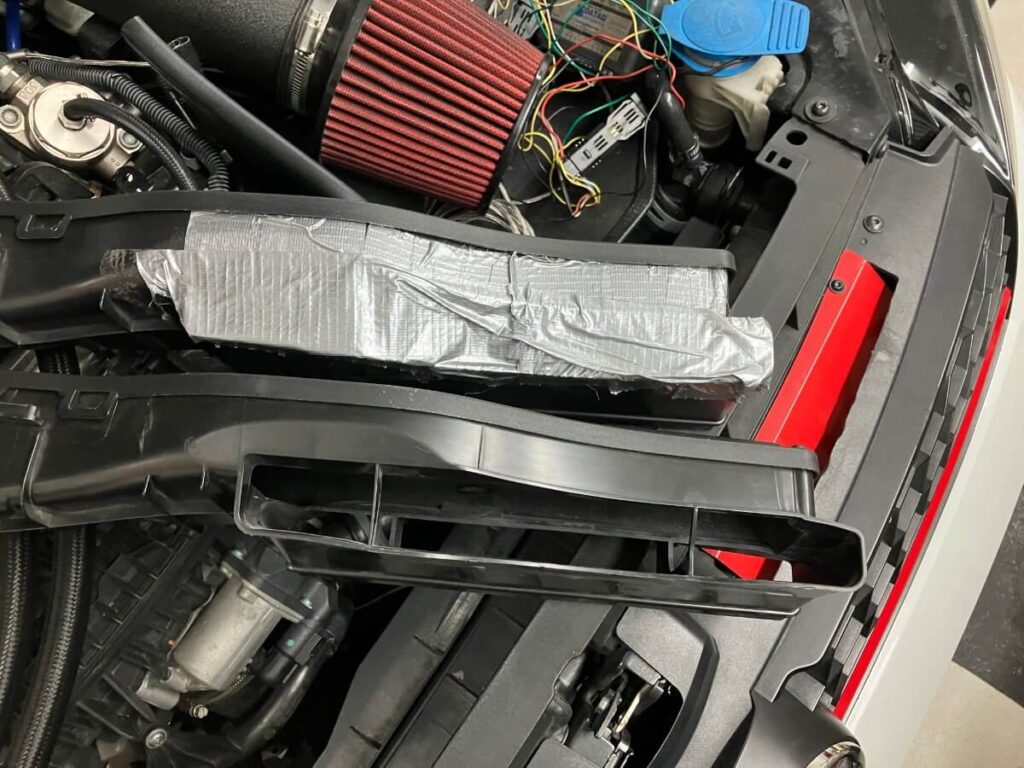
Duct-2 had this area uncovered. Duct-1 is the unmodified air duct.
In the second part of this series, the Duct-2 was evaluated during routine driving. In this post, the measures are being compared during full-throttle acceleration.
Test Process:
The process for collecting the full-throttle acceleration temperature data was described in part 1.
Configurations:
- Duct-1: Unmodified, Driver Side Front Closed, Passenger Side Rear Open
- Duct-2: Modified, Driver Side Front Open, Passenger Side Rear Open
- Duct-3: Modified, Driver Side Front Open, Passenger Side Rear Closed
Test Results:
An overview of the data collection session is shown on the chart:
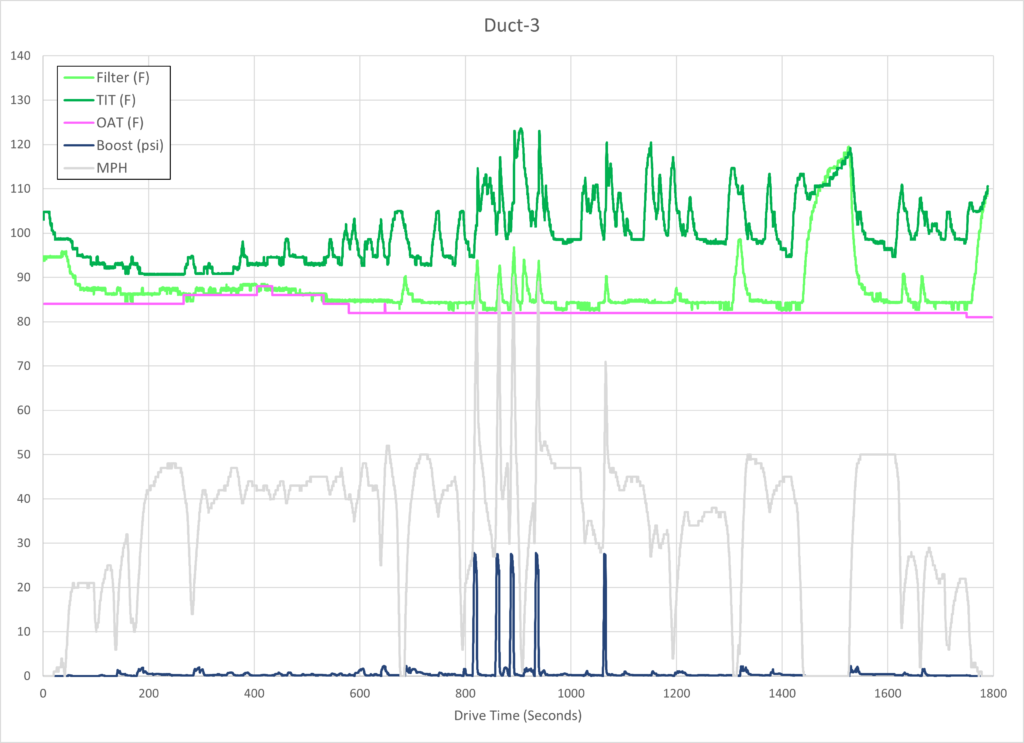
A closer view of the time when the acceleration data was recorded is shown next:
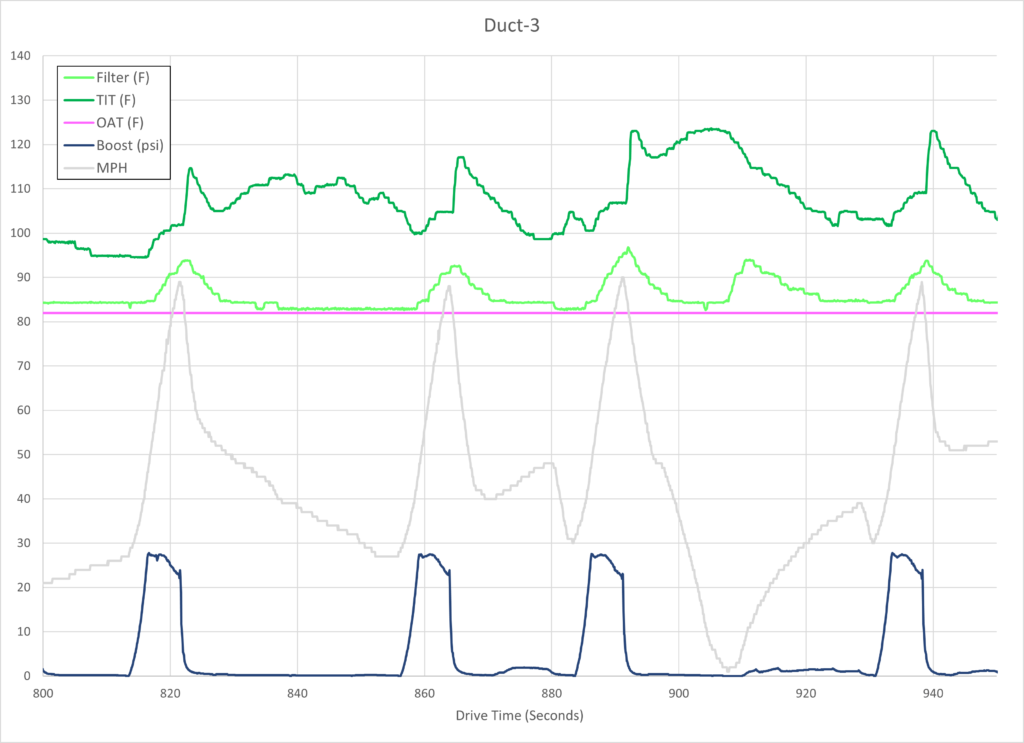
Next is a comparison of the turbocharger inlet air temperature using air Duct2 (dashed lines) and Duct-3 (solid lines):

The turbocharger inlet air temperature above the ambient air temperature at the beginning of the pull for each duct is shown next:
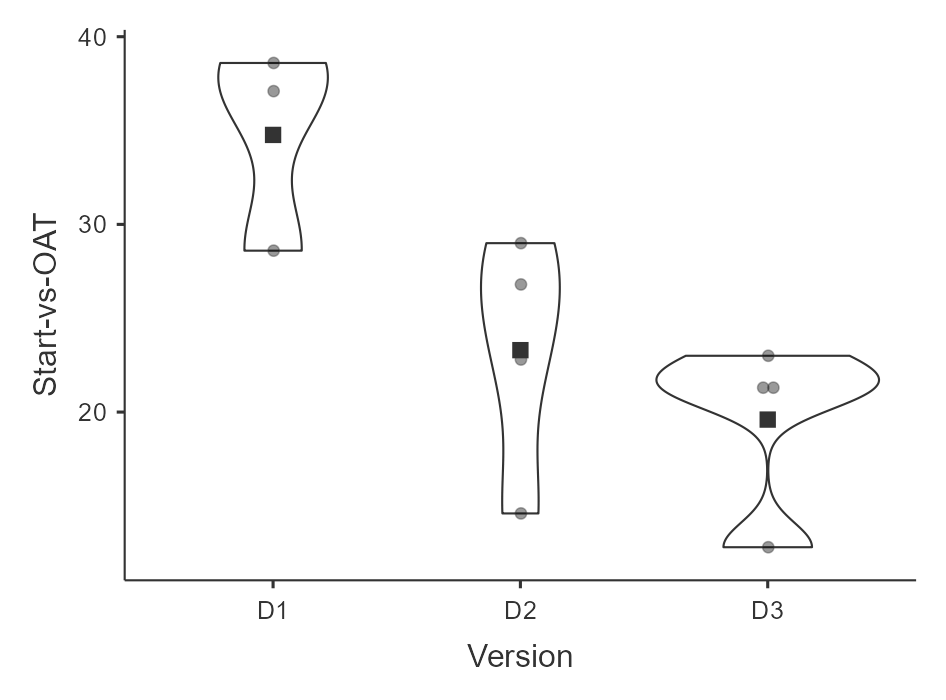
The mean value for each data set is represented with a square box.
The temperature increase during the pull, ending temperature minus starting temperature, is shown next for each of the ducts:
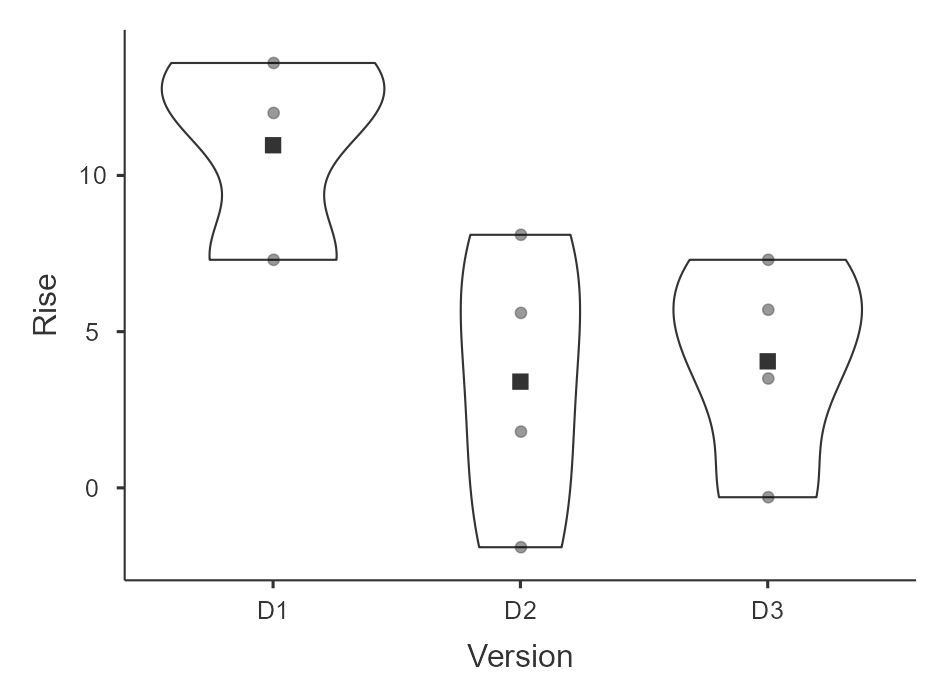
The final chart compares the turbocharger wastegate duty cycle during the pulls for this session with Duct-3 and indicates the range measured using Duct-2 with an arrow:
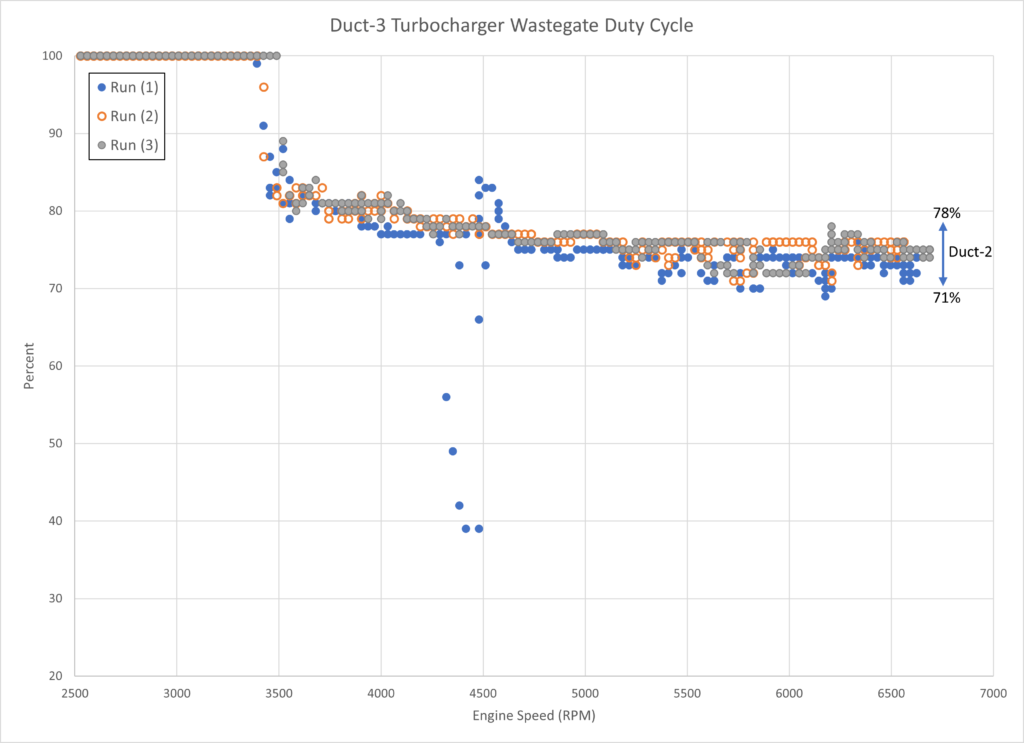
Conclusions:
The modification made with air duct configuration three (3) had a small effect on the starting air temperature during the pulls. Temperature rise during a pull was not noticeably changed.
The turbocharger wastegate duty cycle recorded with Duct-3 is slightly lower than Duct-2, but the ambient air temperature was also slightly lower than with Duct-2 which could be the source of this difference.
Duct-3 had the best combined measurements of the three configurations tested.

So:
duct 1 = stock = driver side front blocked, rear passenger side open
Duct 2 = driver side front cut open, rear engine side open
Duct 3 = driver side front cut open, rear engine side blocked
?
Yes
Could you test this with the mod stock intake to compare to the CTS or open intakes.
I will be able to repeat this with the partition removed to get a worst case scenario.
The stock airbox is something I’d like to try, getting the airbox in with the data loggers might present a challenge.
I thought you did that earler on in your testing? Maybe not? This woudl be the popular “fully modded stock” setup so blocked p. side, open d. side, stock box, grate removed, high-flow filter, larger-bore/smooth silicone hose, aftermarket TIP (standard size turbo). I was always curious about that combo in-total w/r to flow rates vs. the open intakes.
I did something similar that was discussed in this post. But the measure was inside the airbox and not at the turbo inlet. I might have checked the turbo inlet temperature at some point with the stock airbox, but I don’t recall making a write-up, and the setup then would have been different than now. This time I also want to check the wastegate duty cycle, so I want to do that with the same “other” parts that might factor into the reading.